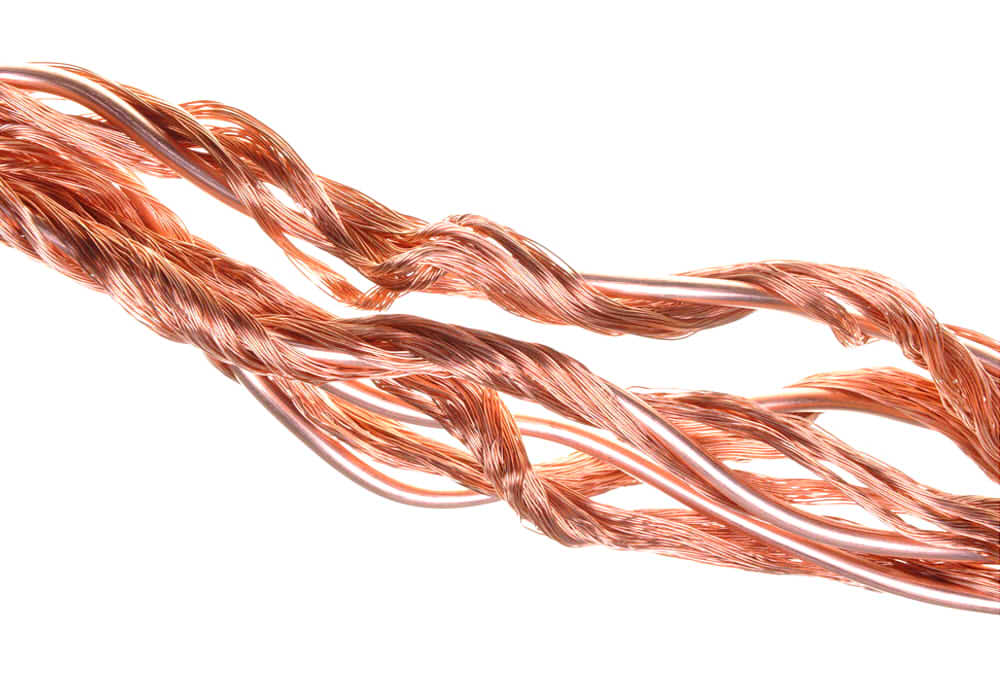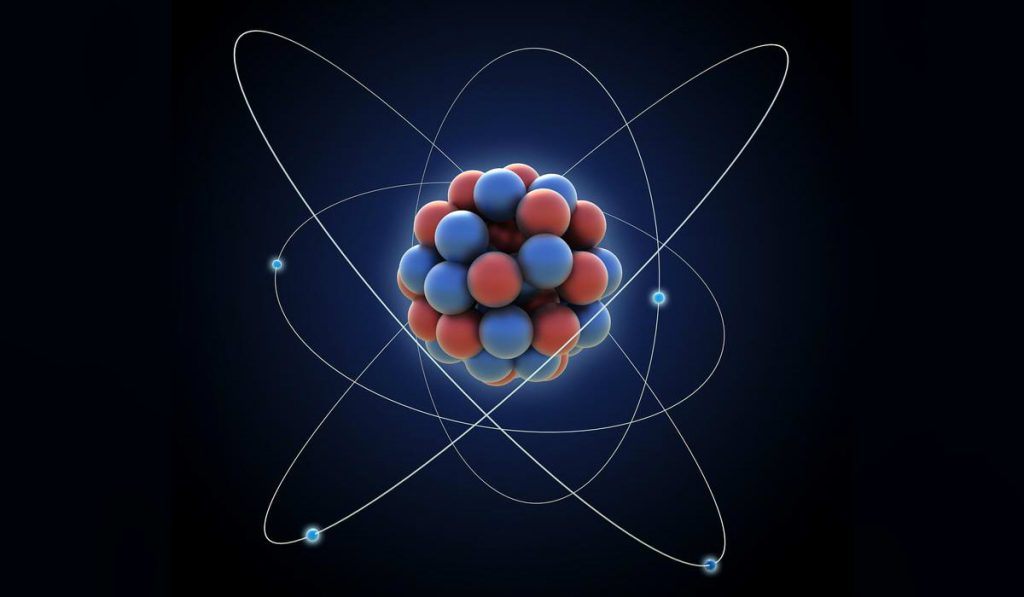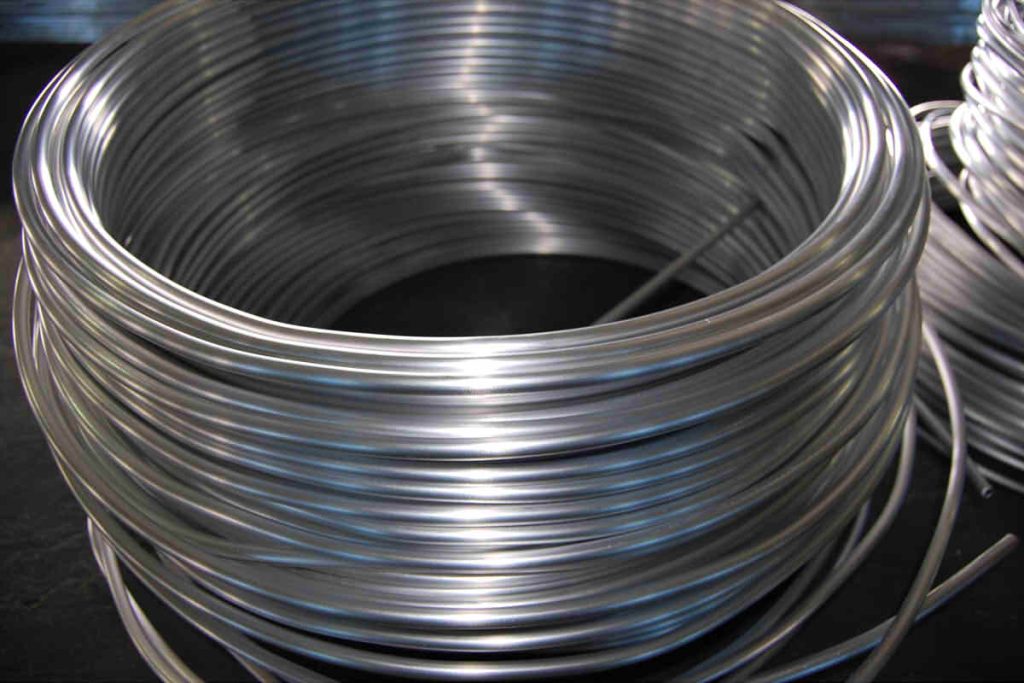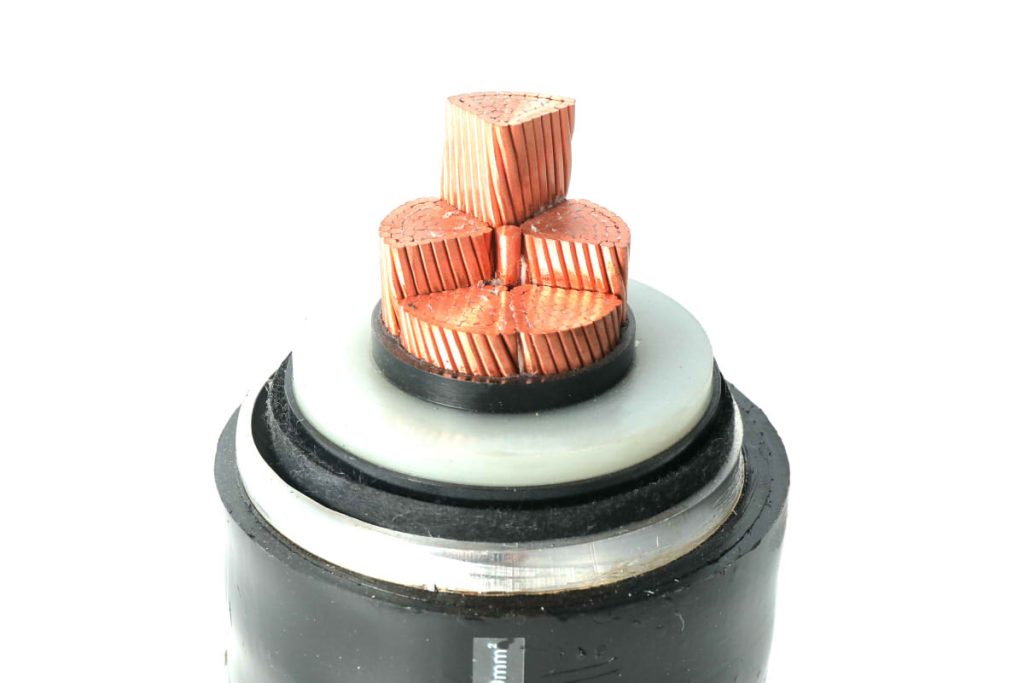Metallic conductors are materials used in the transmission of electrical energy.. Currently, the most common metallic conductors are copper, the aluminum, gold and silver. Considering the price and conductivity, the most used is the copper conductor.
Metallic conductors have low resistance and their electrical transport losses are low.. Its effectiveness is, so, crucial for electricity transmission.

Electrical Conductivity of Common Metals
| Conductor | Symbol | Weight (g/cm3) | Conductivity Coefficient (%) | |
| Oro | Au | 19.3 | 70.80 | Non-oxidizing, caro |
| Plata | Ag | 10.5 | 109 | Optimal conductivity, caro |
| Bronze | Cu | 8.89 | 100 | Suboptimal conductivity, moderate price |
| Aluminum | Al | 2.7 | 61.20 | Ordinary conductivity, light weight |
| Steel | Fe | 7.86 | 17.80 | Poor conductivity, good tensile strength |
In this table, the conductivity coefficient of metals is based on copper (100%). This is due to the wide applicability and low cost of the copper conductors between metals. Copper can also be tinned on the surface to facilitate soldering and has an antioxidant effect..
Why Metals Are Good Conductors of Electricity?
Most metals have good electrical conductivity because they contain a large number of free electrons.. The free electrons move and thus form an electric current. So, Where do the free electrons in metals come from??

Electrons Outside the Nucleus of Metallic Atoms
All atoms consist of a nucleus with electrons outside the nucleus that move around it. The outermost electrons are the least bound to the nucleus.. They are often disturbed by neighboring atoms and, so, move around neighboring nuclei.
Metal atoms have this force when the outer electrons are disturbed. Since this bond strength is so small, Metals are characterized by their tendency to soften and deform easily when heated..
The Internal Structure of Metals
In fact, all solid metals are crystals. In this dotted space structure, each node has atoms or ions that are in constant irregular motion, as electrons travel through them.
When there are no external forces acting on the metal, its electrons constantly move irregularly, like molecules. In this case, the average speed of the electrons in any direction is zero, so there is no current in the metal.
Metallic Conductors in the Electrical Field
If a voltage is applied to the ends of a metallic conductor, the electrons in the outer nuclear layers of the conductor are subjected to an electric field. This allows them to overcome the tether of the nucleus and become free electrons when they leave the nucleus.. These electrons move in the opposite direction to that of the electric field., and it is this directional movement that creates the current in the metal.
Different metals have different crystal structures, which implies a different number of free electrons and a different resistance of the inner shell electrons to them. Therefore, different metals have properties electrical conductors many different.

Power Transmission Speed
In daily life, Electricity is immediately available at the flip of a switch and power arrives almost instantly, how do you achieve this?
In the absence of tension, The speed of electrons in thermal motion in a metal is approximately 100 kilometers per second. The directional movement of the electrons themselves is essentially no more than a few tenths of a millimeter per second. The speed of an electric current is related to the intensity of the electric field.
Electrons in metal are like a parade, voltage is the commander in chief and on command all the individual electrons step forward at the same time. This makes it look like the entire procession is moving forward.. Of course, the electrons themselves continue in constant irregular thermal motion, even when moving directionally, and thermal movement is always present.
Metallic Conductors in Cables

The most commonly used metallic conductors for cables are copper., aluminum and aluminum alloys. Copper has many excellent physical properties as a cable conductor., as high electrical conductivity, high mechanical resistance, good finish, easy processing, easy to calender, wire drawing and welding. It is also corrosion resistant, Therefore, copper is the most used metal as a cable conductor..
Due to its electrical conductivity, Aluminum is only surpassed by gold metals., silver and copper. It is also widely used due to its greater mineral wealth and lower price than copper.. Besides, aluminum conductors are often used in overhead aluminum cables due to its lower weight, which makes installation easier.
ZMS reminds everyone to choose the appropriate metallic conductor for cables based on application requirements, budget and many other factors. Only in this way can the long-term stable operation of the cables be guaranteed..
